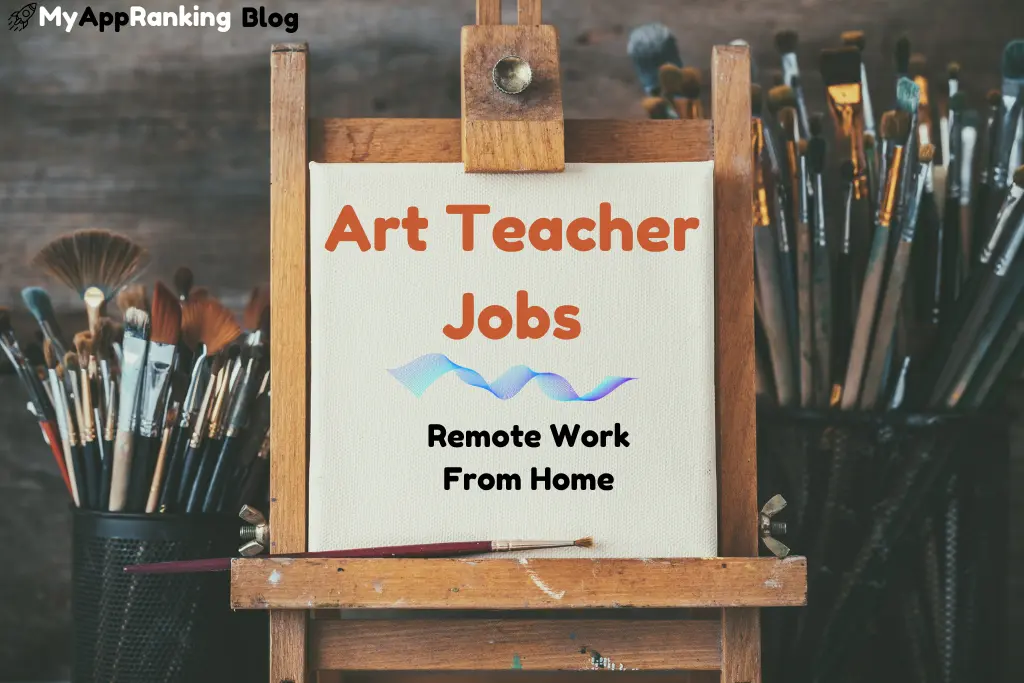Remote Art Teacher Jobs: Work from Home & Teach Online

In recent years, the landscape of education has undergone a significant transformation, particularly in the field of art education. With the rise of digital technology and the increasing demand for remote learning, art teachers now have the opportunity to work from home and teach online. This shift offers numerous benefits, challenges, and exciting possibilities for both educators and students. In this blog, we’ll explore the world of remote art teacher jobs, including how to get started, the tools you’ll need, and the advantages and challenges of this new teaching paradigm.
The Rise of Remote Art Teaching
The concept of teaching art online was once considered unconventional, but the COVID-19 pandemic accelerated the adoption of remote education across all subjects, including art. Schools, colleges, and independent learning platforms have embraced online teaching, providing art educators with new avenues to share their expertise and passion for creativity. Today, remote art teaching is not just a temporary solution but a viable and thriving career path.
Getting Started: Qualifications and Skills
To become a successful remote art teacher, you’ll need a combination of formal education, practical experience, and digital literacy. Here’s a checklist to help you get started:
Educational Background: A degree in Fine Arts, Art Education, or a related field is typically required. Additional teaching credentials or certifications can enhance your qualifications.
Teaching Experience: Prior experience teaching art, whether in a classroom or online, is valuable. This experience helps you develop effective teaching strategies and understand different learning styles.
Technical Skills: Familiarity with digital tools and platforms is essential. You should be comfortable using video conferencing software (e.g., Zoom, Microsoft Teams), learning management systems (e.g., Moodle, Canvas), and digital art tools (e.g., Adobe Creative Suite, Procreate).
Portfolio: A strong portfolio showcasing your artwork and teaching experience can help you stand out to potential employers or students.
Finding Remote Art Teaching Jobs

There are various avenues to explore when searching for remote art teaching positions:
Online Learning Platforms: Websites like Udemy, Skillshare, and Coursera offer opportunities for educators to create and sell courses. These platforms have a broad reach, allowing you to connect with students from around the world.
Educational Institutions: Many schools and universities are expanding their online programs and may have openings for remote art teachers. Check their websites or job boards for listings.
Freelancing Websites: Platforms like Upwork, Freelancer, and Fiverr allow you to offer your teaching services on a freelance basis. This option provides flexibility and the chance to work with diverse clients.
Private Tutoring: Consider offering one-on-one or small group lessons through your own website or social media channels. This approach allows you to build a personalized teaching brand.
Essential Tools for Remote Art Teaching
To create an engaging and effective online art classroom, you’ll need the right tools. Here are some essentials:
High-Quality Webcam and Microphone: Clear video and audio are crucial for effective communication and demonstrations.
Digital Drawing Tablet: Devices like Wacom tablets or iPads with Apple Pencils can help you create and share digital art seamlessly.
Art Software: Programs like Adobe Photoshop, Illustrator, and Procreate are popular choices for digital art creation.
Virtual Whiteboard: Tools like Jamboard or Miro allow you to illustrate concepts and interact with students in real-time.
Learning Management System (LMS): An LMS helps you organize course materials, assignments, and communication with students. Popular options include Moodle, Canvas, and Google Classroom.
Advantages of Remote Art Teaching
Teaching art online offers numerous benefits, including:
Flexibility: Remote work allows you to set your own schedule and work from anywhere. This flexibility can lead to a better work-life balance.
Global Reach: The internet eliminates geographical barriers, enabling you to connect with students from all over the world and share diverse perspectives.
Innovative Teaching Methods: Digital tools and platforms provide opportunities to experiment with new teaching techniques and interactive content.
Cost Savings: Working from home reduces commuting costs and time, and you can save on materials by using digital art tools.
Challenges of Remote Art Teaching
While there are many benefits, remote art teaching also presents some challenges:
Technical Issues: Internet connectivity problems, software glitches, and hardware malfunctions can disrupt classes and affect the learning experience.
Student Engagement: Keeping students engaged and motivated in a virtual environment can be challenging. Interactive activities and frequent feedback are essential.
Hands-On Experience: Art is a tactile subject, and some techniques are best learned through hands-on practice. Finding ways to replicate this experience online can be difficult.
Isolation: Working from home can be isolating. It’s important to find ways to stay connected with colleagues and the art community.
Final Thoughts
The world of remote art teaching is full of opportunities and potential. By leveraging digital tools and platforms, art educators can reach a wider audience, enjoy greater flexibility, and innovate their teaching methods. While challenges exist, they can be overcome with the right preparation and mindset. Whether you’re an experienced teacher or just starting your career, remote art teaching offers a fulfilling and dynamic path to share your passion for art with the world.
Are you ready to embark on your journey as a remote art teacher? The digital canvas awaits your creative touch!
Do you Want
More App Downloads?
Boost the Mobile App Growth with the Ultimate Mobile App Marketing Experts
Latest Blogs
Categories
Do you Want
More App Downloads?
Boost the Mobile Game Growth with the Ultimate Mobile App Marketing Experts
To become a remote art teacher, you typically need a degree in Fine Arts or Art Education, teaching experience, and digital literacy skills.
Essential tools include a high-quality webcam and microphone, digital drawing tablet, art software, and a learning management system (LMS).
You can find remote art teaching jobs on online learning platforms, educational institution websites, freelancing websites, and by offering private tutoring services.
Remote art teaching offers flexibility, a global reach, opportunities for innovative teaching methods, and cost savings on commuting and materials.
Challenges include technical issues, student engagement in a virtual environment, replicating hands-on experiences, and potential feelings of isolation while working from home.




